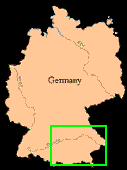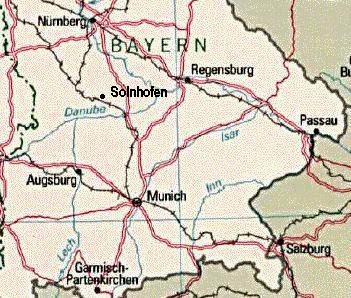



Today, in the state of Bavaria, in region between Nuremberg and Munich, these carbonate muds form a type of fine-grained, flat-cleaving limestone (known as Plattenkalk in German) that has been quarried since the Stone Age for roof and floor tiles, and more recently for lithography. These rocks -- known as the Solnhofen or Solenhofen Limestone, after the small town of Solnhofen -- are also famous for their fossils. Although relatively rare, fossils from the Solnhofen Limestone may show exquisite detail, and often include fragile or soft-bodied organisms that usually leave no fossils at all, or only fragmentary ones. Vertebrate and invertebrate animals, land plants, and protists are all represented as fossils in the Solnhofen Limestone.
From sites like this with exceptional preservation, called by the German name Lagerstatten, paleontologists have learned a great deal. Such sites may be the only source of information on fossil organisms that would otherwise leave no traces at all. They allow organisms of the past to be reconstructed in great detail; for instance, the only way we know that Archaeopteryx had feathers is from its exceptional preservation in the Solnhofen Limestone. They also allow more accurate reconstruction of past ecosystems by giving an unusually complete picture of the biodiversity of their times.
Let's meet some of the denizens of the Solnhofen Limestone, mostly from the collections of the University of California Museum of Paleontology. Click on any picture to obtain a full-sized image.
 Rhizostomites, a
jellyfish. . .
Rhizostomites, a
jellyfish. . .
 Protolindenia, a
dragonfly. . .
Protolindenia, a
dragonfly. . .
 This beetle. . .
This beetle. . .
 Saccocoma, a small, free-swimming crinoid or "sea lily," one of the
echinoderms. . .
Saccocoma, a small, free-swimming crinoid or "sea lily," one of the
echinoderms. . .
 Alligatorellus, a small crocodile. . .
Alligatorellus, a small crocodile. . .
 and finally,
Archaeopteryx
itself, the earliest known
bird.
and finally,
Archaeopteryx
itself, the earliest known
bird.


